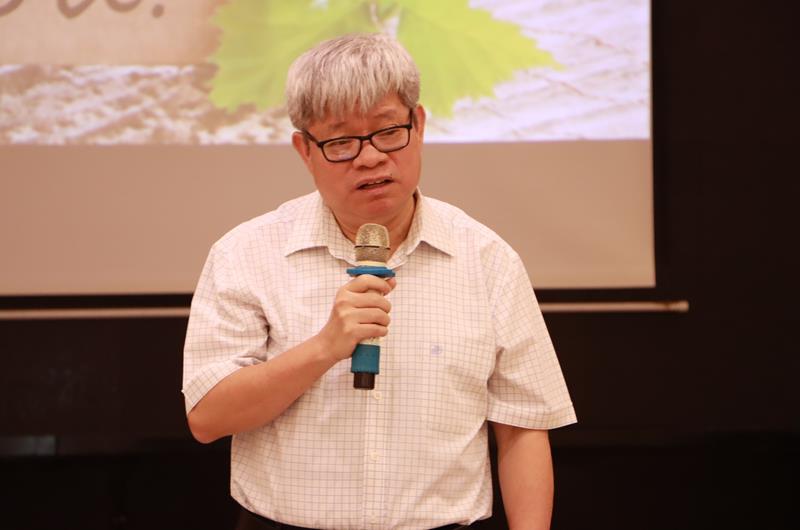Together with the world, Vietnam has identified many measures to reduce greenhouse gas (GHG) emissions for the energy, agriculture, land use, land use change and forestry sectors, waste and industrial processes. The goal that Vietnam is aiming for is to reduce greenhouse gas emissions, aiming to reduce net emissions to "zero" by 2050.

Assoc. Prof. Dr. Phung Chi Sy
To understand more about solutions to reduce greenhouse gas emissions, we had an interview with Assoc. Prof. Dr. Phung Chi Sy, Director of the Environmental Technology Center (ENTEC) belongs to the Vietnam Association for the Protection of Nature and Environment.
Can't be left out
*GHG emission is one of the great concerns of mankind, so many countries around the world have sought to reduce it. As an environmental expert, please tell us more about the problem. This?
- Due to the pressure of climate change and sea level rise, the world is very interested in the inventory reduction of GHG emissions. Most recently, at the 26th and 27th Conferences, the Parties to the United Nations Framework Convention on Climate Change (referred to as COP26 and COP27) have offered many solutions to reduce greenhouse gas emissions, one of which is to require developed countries to reduce GHG emissions and help developing countries reduce greenhouse gas emissions.
Green economy, production with reduced environmental impact and increasingly stricter standards in the international community, especially in countries with a high level of development. This is a global trend, no country can go against it because it will be backward and isolated.
*So, for Vietnam, what commitments has the Government made?
As a responsible country, Vietnam is also committed to implementing solutions to reduce emissions. The government also pledged to reduce GHG emissions by 9% if we do not have international support, and if international support, we commit to reduce 29%. According to the roadmap, Vietnam strives to reduce net GHG emissions to zero by 2050 (meaning equal emissions and intakes). To do that, the Government has issued many documents directing ministries, branches and localities to organize the implementation and one of the contents is that we try to create a carbon market so that we can trade in carbon, exchange of carbon credits to create capital to support technology improvement and technological innovation to reduce environmental pollution and reduce greenhouse gas emissions..
* More specifically, what are the solutions aimed at here, sir?
In the field of GHG emission reduction, currently according to the regulations of IPCC (United Nations Intergovernmental Panel on Climate Change) and regulations of Vietnam, we are implementing in 5 areas including: industrial process and product use; traffic sector; energy sector; waste treatment field; agriculture, forestry and other land use.
Each field has many different solutions. For example, in the industrial sector, changing raw materials, fuel, cleaner production solutions, sustainable production and consumption, green growth, low carbon production. For the traffic group, it will be vehicle emission control; using biofuels, clean energy for motor vehicles; public lighting intelligently, economically and using solar energy..
Must be proactive to implement
*In the issue of GHG emission reduction, how do we separate the responsibility from the State and enterprise?
The State develops and promulgates a system of inventory and monitoring of GHG emissions and a system of measurement, reporting and appraisal from the national level to the emission facility level. It is necessary to set out a roadmap to reduce emissions for each sector and sub-sector in a transparent, complete and appropriate manner to specific conditions. Enterprises need to grasp information and carefully prepare for market participation through capacity building in inventory activities, application of production solutions, business to reduce harm to the environment. After all, the policy's success or not is measured by the business's employment because this has been and will be the object in the process of operation with large emissions.
* Particularly for Dong Nai, by studying the actual situation in the area, what recommendations do you have for the local government?
- General research results in Dong Nai province show that total GHG emissions tend to decrease in the period of 2018 - 2020. However, there are different fluctuations for each field. The energy, transportation and industrial process sectors have an increasing tendency to use the product. The waste and agriculture sectors tend to decrease, in which the agricultural sector tends to decrease the most.
From that fact, we believe that localities need to make efforts, together with stakeholders to build mechanisms and sources of capital to encourage and support enterprises to innovate production lines towards resource efficiency, saving money. energy; credit support, price subsidy for recycled products. Another problem is that it is also necessary to form and develop a market for recycled, green, clean and environmentally friendly products.
Thank you Sir!